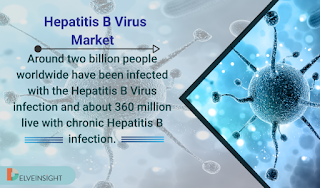Bile Duct Cancer Market
Bile duct cancer Overview
Cholangiocarcinoma or Bile Duct Cancers arise from the epithelial
cells of the intrahepatic and extrahepatic bile ducts. Cholangiocarcinomas are
the most common biliary tract malignancy and based on its location, classified
as intrahepatic, perihilar and extrahepatic– the latter two were previously
grouped as extrahepatic cholangiocarcinoma. Most occur without a clear cause,
although certain factors can increase the risk of getting it.
Cholangiocarcinoma symptoms include yellowing of the skin and whites of the
eyes (jaundice), itchy skin, pale stools and dark urine, loss of appetite and
weight loss, persistent tiredness, abdominal pain and swelling, high fever,
chills and shivering and many others. Bile Duct Cancers are more common in
males than females and usually affects patients who are between 50-70 years of
age.
Bile duct cancer Epidemiology
Primary biliary tract malignancies affect one in every 100,000
people per year in the United States, and it has been found that more than 95%
of these malignancies are Bile duct cancer (epithelial adenocarcinomas)
frequently found in the extrahepatic biliary tree. In the United States, there
are approximately 5,000 new cases. Bile duct cancer diagnosed each year. The
age-adjusted rates for cholangiocarcinoma in the US are highest among Hispanics
and Asians (2.8–3.3/100,000) and lowest among non-Hispanic whites and blacks
(2.1/100,000). Extrahepatic and perihilar CCA are the most common types with
6–8% of CCAs being intrahepatic, 50–67% perihilar and 27–42% distal
extrahepatic.
Bile duct cancer is slightly more prevalent in males than females
(1.3:1.0) and usually affects the patient in the fifth to the seventh decade of
life. Furthermore, among the types, it has been observed that the incidence of
extrahepatic cholangiocarcinoma increased modestly from 0.95 to 1.02 per
100,000 during the 40 years (1973-2012). In the United States, incidence rates
of intrahepatic cholangiocarcinoma have increased by 165% between the late
1970s and the late 1990s from 0.32/100,000 to 0.85/100,000.
Bile duct cancer Treatment
Bile duct cancer treatment depends on the size and location of the
tumour. The current standard cholangiocarcinoma treatment includes Surgery,
Photodynamic therapies, Targeted therapies, Radio sensitizers and
Chemotherapies. The primary bile duct cancer treatment is surgery, however
radiation therapy (external beam radiation therapy and Brachytherapy) and chemotherapy
are used if surgery is not active like incase of both stage III and stage IV
cancers which cannot be completely removed surgically.
The use of locoregional therapies in patients with intrahepatic
cholangiocarcinoma is also being established. Different methods of
intra-arterial therapy include bland embolization, trans-arterial
chemoembolization (TACE), the use of drug-eluting beads and radioembolisation.
Better ways to use laparoscopic surgery are also being tested and compared to
open surgery. Adjuvant and neoadjuvant treatments are also active areas of
research interest as well.
Lately, there has been a rise in bile duct cancer awareness among
physicians, improvement in imaging techniques and new pathology tests, which
together contribute to an increase in several diagnoses, particularly of
intrahepatic cholangiocarcinoma. This increase in diagnosis, rising incidence
and awareness, rich emerging pipeline, a better understanding of the genetic
mutations, along with the testing of targeted drugs and immunotherapies in
people with this disease are laying the groundwork for long-awaited advances in
the treatment therapies. These factors have led to impact the treatment of Bile
Duct Cancer market size in the upcoming years.
Bile duct cancer market
Many key players such as Agios Pharmaceuticals, Incyte
Corporation, Sirtex Medical, Delcath Systems, Immunitor LLC, Jiangsu HengRui
Medicine, and many others are developing therapies for Bile Duct Cancer
treatment. Therapies for Bile Duct Cancer market treatment are AG-120 (Agios
Pharmaceuticals), Pemigatinib (Incyte Corporation), Melphalan / HDS (Delcath
Systems), Cisplatin-gemcitabine (Sirtex Medical), Apatinib (Jiangsu HengRui
Medicine), and others along with other compelling treatment options in the
clinical trials is expected to increase the overall Bile Duct Cancer market
size in the upcoming years.


Comments
Post a Comment